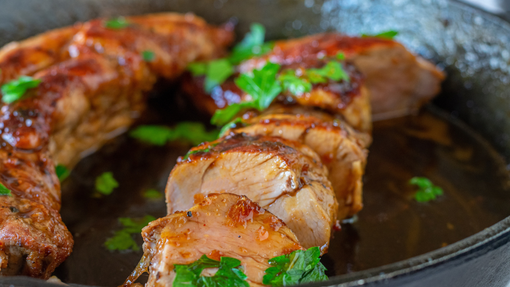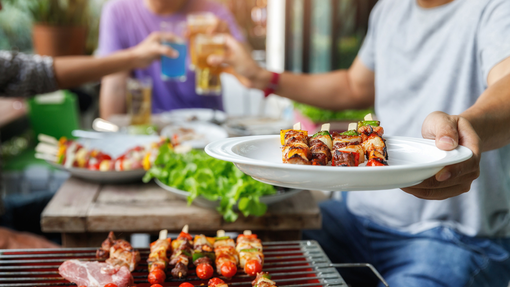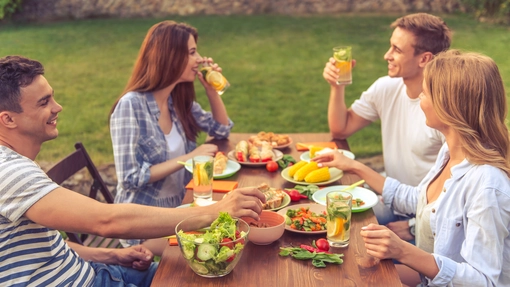Pork refers to cuts of uncured raw meat from a pig and can be bought in a variety of different ways including chops, spare ribs and joints for the sunday roast. As well as roasting, pork can be pan-fried, grilled or cooked in the slow cooker. Pork is a source of protein and also contains vitamin B12 and minerals such as iron and zinc.
How to store
How to store fresh pork
All raw meat should be stored at the bottom of the fridge in a clean, sealed container to stop it touching or dripping onto other things. Store up to its use by date. Do not consume after the use-by date.
Freezing pork
Raw and cooked pork can be frozen for between 3- 6 months (check packaging for any specific details). Freeze raw pork right up to its use by date.
Storing cooked pork
Store in an airtight container in the fridge for up to 2 days, freezer for 3 - 6 months.
Pork top tips
How to freeze and defrost
How to freeze: Separate raw pork slices with greaseproof paper and seal in an airtight container before freezing. Remember to add a label of what it is and the date you froze it. You can freeze raw pork up to is use by date. After the use-by date, the food is unsafe to eat, even if it has been stored correctly and looks and smells fine.
It’s best to use up food in your freezer within 3 to 6 months, but it’s worth checking the packaging for any freezing guidelines specific to that product.
How to defrost: When you take food/ drink out of the freezer, it’s important to defrost it safely. Don’t defrost at room temperature. Ideally, defrost fully in the fridge and use within 24 hours. Or, use a microwave on the defrost setting directly before cooking/ reheating.
Eating the whole food
Use/freeze bones and carcass meat after a roast to make stock at a later date.
Be fabulous with leftovers
Pork should be cooked, eaten or frozen right up to the use-by date. Once raw pork has been defrosted, cook within 24 hours. Once cooked, this will last for a couple of days in the fridge, or it can be frozen again. Defrost and eat within 24 hours. Always make sure to check the on-pack instructions after purchasing.
Cut any leftover uncooked pork into strips and use in a stir fry. Any leftover cooked meat can be added to salads, sandwiches or wraps for lunch the next day.
Buying tips
Buy the right pack size for your needs. Think about whether you’ll get through the whole pack before the Use By date and how long you have to use the food once the pack has been opened. If you’re not going to eat it all in time, freeze some for later. Try to buy locally produced pork to reduce your footprint (impact on our planet).
Valuing your Pork beyond the price tag
Goodness in food
Your food is more than its shape, colour and price. Your food has an important role to play to help keep you healthy and with enough energy to live your life how you wish to.
- A source of protein which the body needs for growth and repair of muscles and bones.
- A good source of vitamin B12 which helps the body make red blood cells and keep the nervous system healthy.
- Pork is high in saturated fats which can increase the amount of cholesterol in the blood. This could increase your risk of developing heart disease.
Food story
By the time your food arrives in your home, it’s already been on quite a journey starting with how it is made or grown and how your food reaches the supermarket.
So please help our food to finish its story in the most sustainable way, ensuring the planet’s resources that’s already used are put to good use. Take care of your food when it’s in your home and ensure every edible morsel is eaten - and that your food doesn’t end up in the bin!
Why not try these delicious recipes to use up Pork
This recipe is a great one for a group of people to get stuck in and build their own fajitas.

This recipe includes a delicate apricot stuffing with a sweet cider sauce and it’s a great way to use up leftover bread.

This is a neat little dish for being creative with your leftovers. You can have them hot or cook them the night before to take cold to work for lunch. For best results keep your leftover veg in the fridge with your roast until you need them for this recipe.






